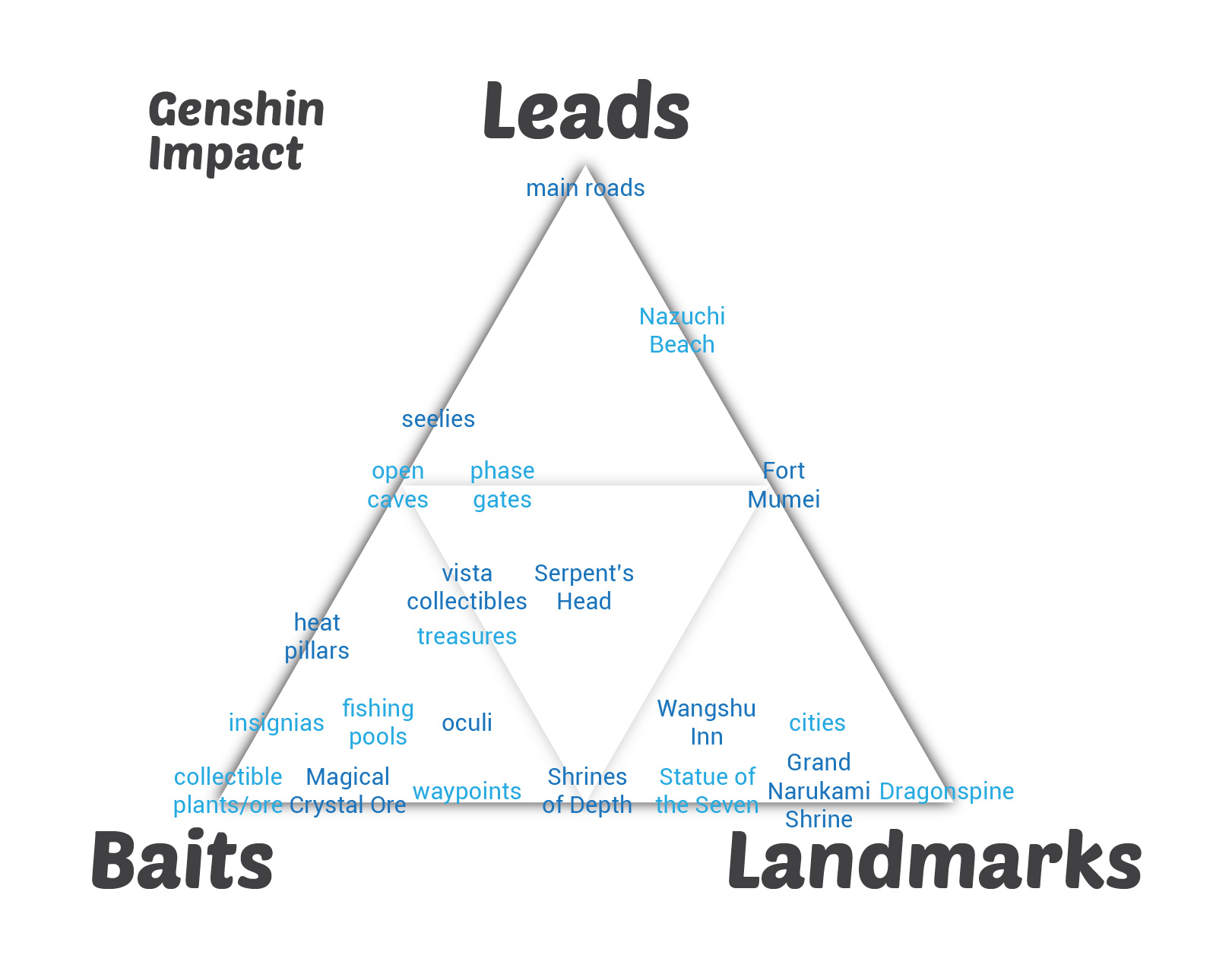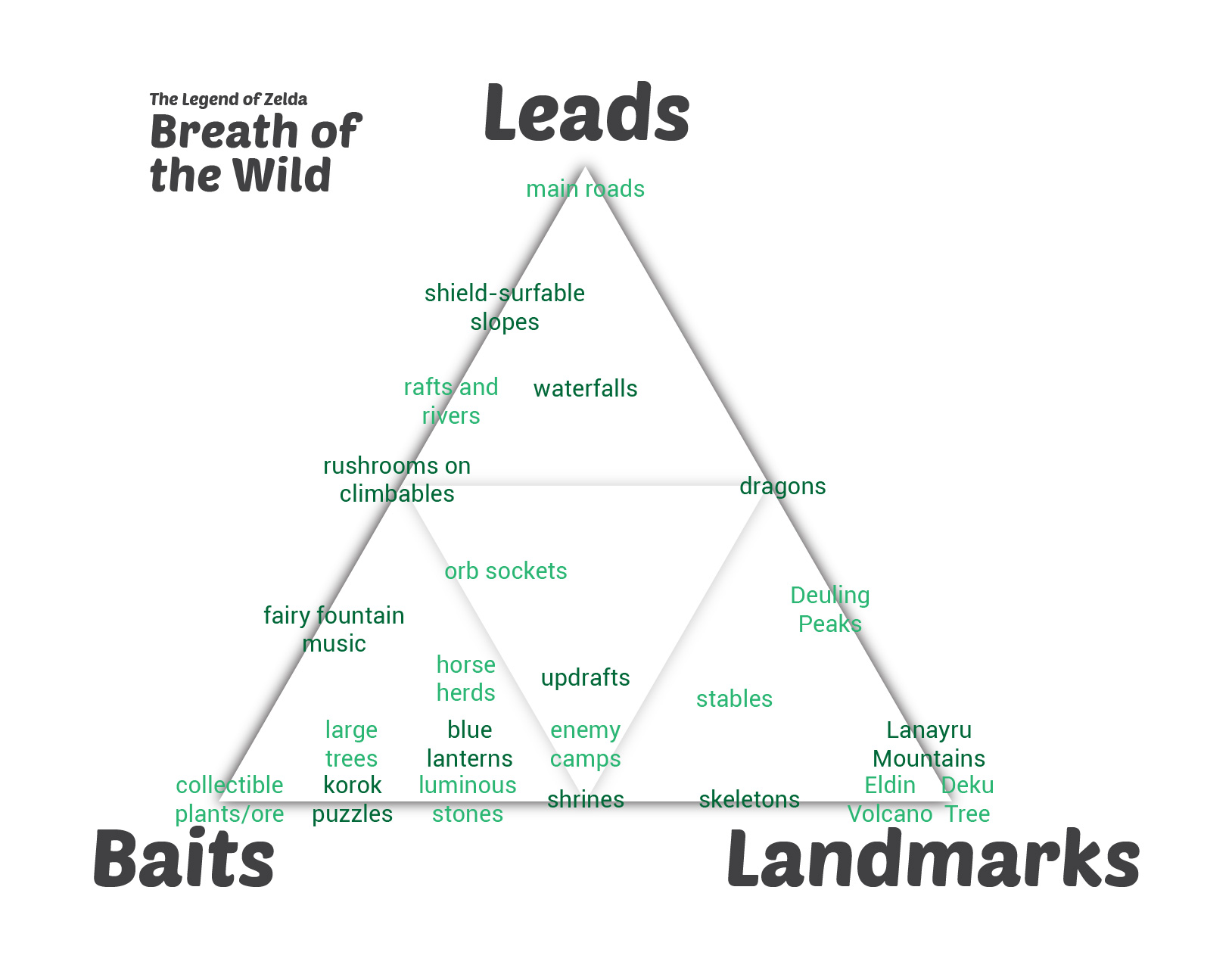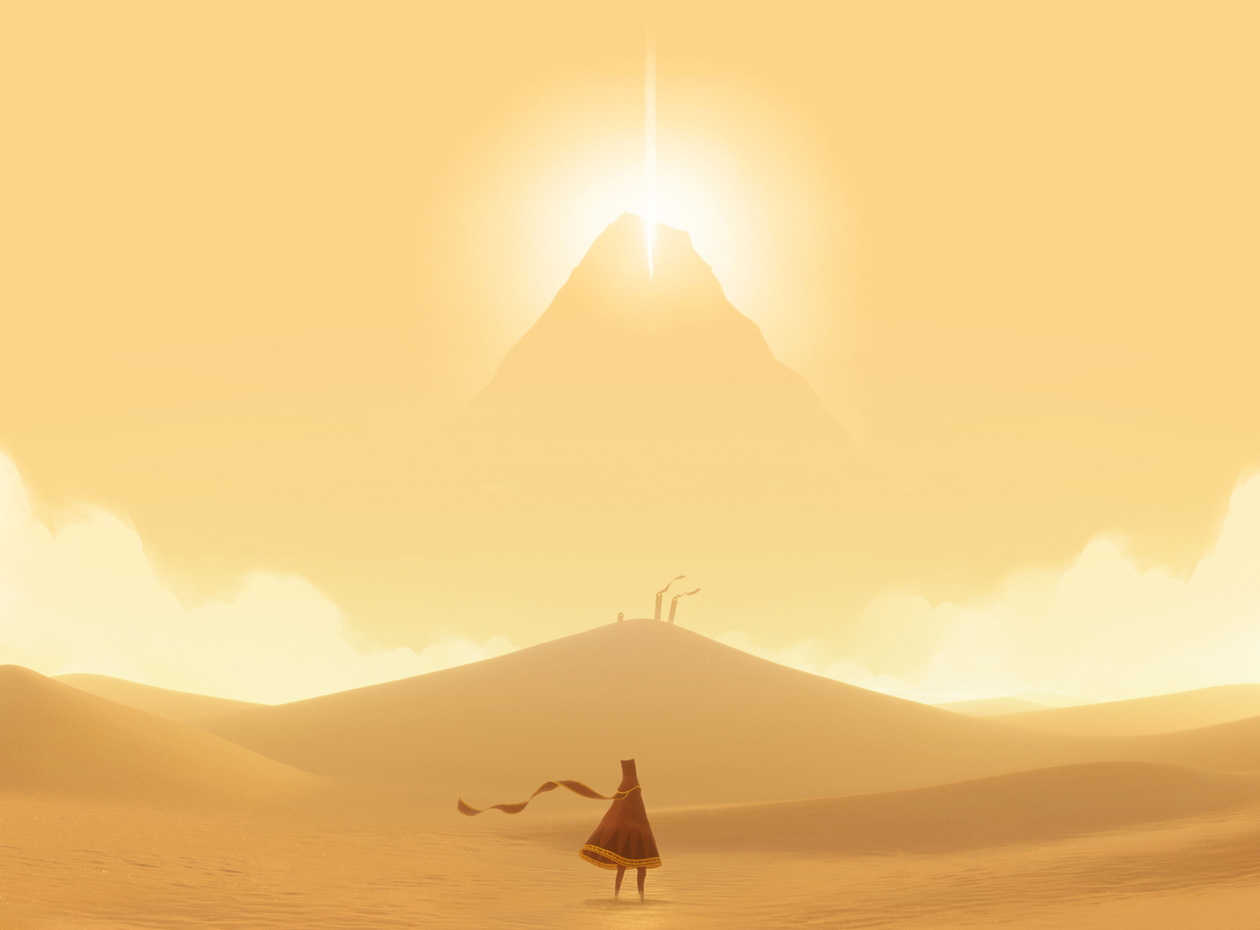
Open world games tend to make us want to wander—all we need is a destination. That said, part of what makes a journey worth journeying are the little finds we encounter along the way. They might lead you to important collectibles, or a new area.
By far, I think the largest deciding factor in what leads players towards a certain direction, are things they see in the landscape. I believe the density and spacing of these elements are also very important attributes we as level designers should keep in mind—for they also determine the pacing of the game in a way.
But this can differ per game; after all, worlds have different densities, time per game session, mobility mechanics, gameplay, or even camera perspectives. Let’s have a closer look at three categories of visual elements that contribute to that urge to want to explore more; baits, leads and landmarks.
Listen to article
Defining baits, leads and landmarks
Baits
Baits are things relatively close to a player that easily grab their attention. These are collectible plants between trees, tokens or vista points up for grabs, etc.

Baits are small enough to be used as ‘breadcrumbs’, and can lead the eye to some other subject in the environment. They differ from ‘leads’ in a sense that they are single instances, rather than a consistent path leading you to an objective relatively close by. Baits are easy to grab too; simply walk over them, or use a single button to grab. Big parkour trails, boss fights or puzzles aren’t usually blocking it.
Leads
Leads are consistent and often uninterrupted visual elements in the landscape, that simply imply a long route—rather than a destination. Main roads, rivers, or scent traces can be considered leads. Though a destination can be revealed or teased, level designers can use this tool to instil excitement and curiosity in the player. Either that, or lead the player back on a desired path.
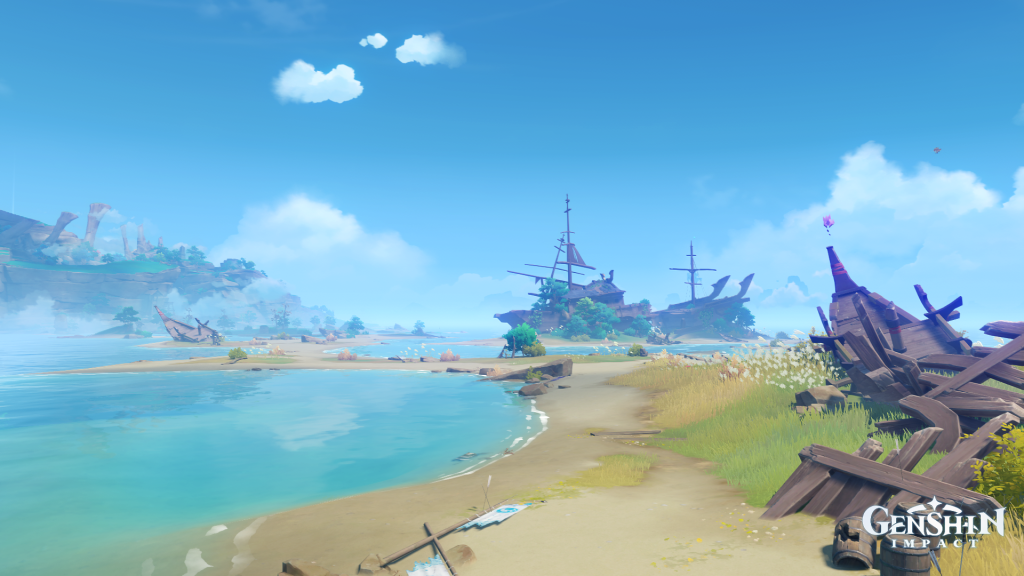
A fair warning for level designs and even environment artists to consider, is that some leads—like beach lines, rivers and the like—can be interpreted as ‘natural’ occurrences. And therefore might not be associated with ‘leads’ by the player. One can prevent this by having players connect these dots early in the game, where they still explore the visual rules of the game’s navigation.
Landmarks
Landmarks are unique and easily recognizable visual elements in the landscape. This can be a building, landform, or a town in the distance. Not only are they easy to spot from large distances, they often provide a vantage point of equal reach. Players can use these landmarks to get a sense of their location in the world, or find new points of interest. Usually, they are considered a destination, giving players a heading to journey towards. Once arrived, a unique perspective of the landscape is experienced that finalizes the feeling of traveling.
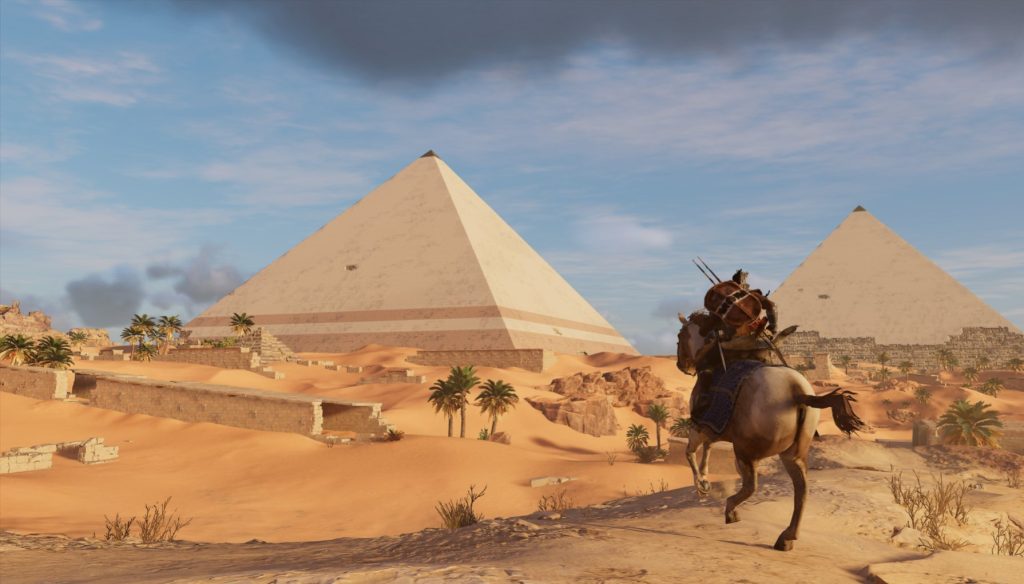
Examples: Genshin Impact and The Legend of Zelda
Level design characteristics
Genshin Impact’s level design is optimized for short, immersive, visually appealing and engaging game sessions:
- Always have a landmark in sight so players can immediately set a travel goal. Emphasize this by making it visually appealing, or relevant to the local lore.
- While walking or when there is a lack of a landmark, always make sure there is something to collect or fight. This means level design must facilitate there to be lines of sight, or ‘signs’ (like baits) to guide the player.
- Maintain as little empty filler-space as possible; if certain nooks and crannies cannot be filled with large-scale points of interest, use rare collectibles or secret dungeons instead.
- Most important of all; since I assume players don’t take/have much time to play per session, the density of activities and means to incentify players are relatively very high.
Frequency of play
I believe the intended play-style and rhythm intended is one where players play the game 4-6 days of the week, for at least 2 hours a day. Aside from engaging with the new content, their main routine is to do dailies, weeklies, and grind level-up materials.
Thus, Genshin Impact is geared towards providing quick access points–like teleportation sites–to these scheduled activities. Collectibles on the other hand, can be found all over the map. This fosters ‘deeper exploration’ on days where players have more time.
Content Release Style
An important thing to note about Genshin Impact is that—at the time of writing—the game has not yet been completed, and new things keep getting released. However, never is the content released all at once. For example, when a new ‘country’ is released, only the main ‘provinces’ are available, saving the smaller ones for later. When an event makes way for a set of minigames, the initial stages of each are available on the first day, while the rest are released over-time. This means players consume new content in modules, with intervals.
The map of Breath of the Wild is a single-player game designed to mainly be traversed on foot or from the saddle. Its level design is mainly horizontal, less-so vertical.
Density
As opposed to Genshin Impact, BotW spaces its baits leads and landmarks even more, aiming for players to ‘wander’ rather than traveling with a predetermined activity. Teleportation sites are also very sparse; they limit themselves to locations of recovery, or a vantage point from which to plan your next journey.
Landscape traversal
Something that characterizes the landscape in BotW very well, is how it facilitates both long-distance and short-distance travel. Some areas–like The Great Plateau, Hebra Mountains, or Eldin Volcano–have great density of baits like plants and ores. This is because they are designed to be explored on foot. On the contrary, large open spaces like Hyrule Field, Tabantha Tundra and Faron Grasslands, are geared more towards mounted gamplay.
Areas optimized for horseback-activities have fewer baits, larger spaces to traverse, and at least a landmark or lead in sight. This is because gameplay on horseback is less about collecting, more about covering distance.
Furthermore, this game features two axis on which level design takes place: horizontally and vertically.
